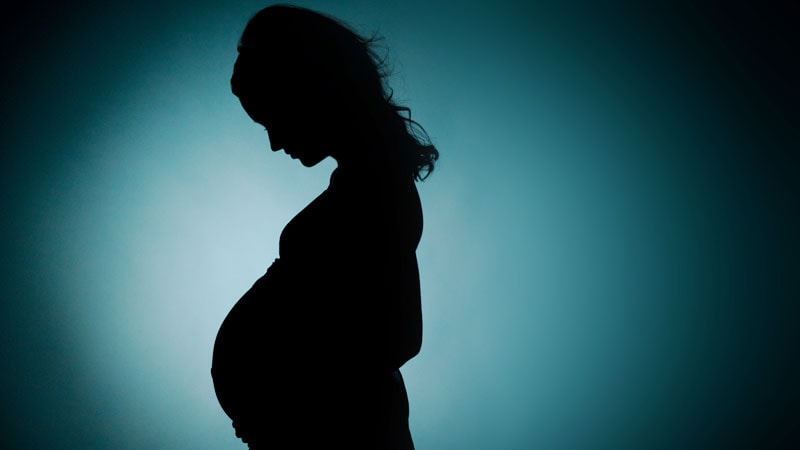Peripregnancy maternal deaths can be classified into three distinct subtypes with different causes, not all of which are obstetric, according to a new study.
A review of coroners’ data on all maternal deaths that occurred during pregnancy and up to 1 year afterward in Ontario, Canada, identified these categories of maternal death: in-hospital death during birth or immediately postpartum, accidents or unforeseen obstetric complications also resulting in infant demise, and postpartum suicides occurring out of the hospital.
“The cause of maternal death needs to be clarified according to the time that death occurs. For example, a suicide death that occurred almost always after giving birth is typically quite a distance after the birth, and not a few days after the birth,” study author Joel G. Ray, MD, professor of medicine at the Temerty Faculty of Medicine, University of Toronto, and St. Michael’s Hospital in Toronto, told Medscape Medical News.
The findings may enhance clinical and policy development aimed at reducing pregnancy mortality, according to the authors. They were published in the Journal of Obstetrics and Gynaecology Canada.
Modifying Death Certificates
The investigators performed a detailed review of coroners’ death files for Ontario, which has a single reporting mechanism for maternal deaths. In searching the Office of the Chief Coroner for Ontario database from 2004 to 2020, they identified 273 deaths in pregnancy or within 365 days thereafter. Next, they abstracted variables related to the social and clinical circumstances surrounding the deaths from each death file, including demographics, forensic information, nature and cause of death, and antecedent health and healthcare factors.
The mean age of the women at the time of death was 32.5 years, and about 30% of women resided in a low-income area.
Overall, 163 deaths (59.7%) occurred outside of the hospital. There were 127 (46.5%) deaths during pregnancy and 125 (45.8%) after pregnancy. About 63% of the deaths were categorized as “natural.”
The researchers found that there were 66 deaths (24.2%) resulting from suicide, including 31 from hanging, 25 from an intentional overdose, eight from a fall, and the remainder due to drowning or inhalation. In addition, there were 11 unintentional overdoses (4.0%).
Physical injury was the leading cause of death (n=60; 22.0%), followed by hemorrhage (n=46; 16.8%) and overdose (n=3613.3%).
Preeclampsia (n=30; 11.0%), pregnancy-related sepsis (n=27; 9.9%), and thromboembolism (n=27; 9.9%) were the next most common causes, followed by amniotic fluid embolism (n=22; 8.1%).
Using latent class analysis, the researchers identified the these three distinct subgroups:
In-hospital deaths arising during birth or soon thereafter (52.7% of deaths)Accidents and unforeseen obstetric complications also resulting in infant demise (26.3% of the sample)Out-of-hospital suicides occurring postpartum (21.0% of the sample).
The monitoring of maternal deaths during or after pregnancy should include deaths that occur outside the hospital, said Ray. “The cause of a suicide death is entirely different from cause of death that might occur around the time of the delivery, as those causes are much more medical and obstetrical,” he added.
The investigators suggested amending death certificates to include a check box to denote pregnancy status in coroners’ reports. “We would like to see a formal check box to ask whether this woman was pregnant in the 365 days before she died,” said Ray. “That is a critical missing component in our national, Canada-wide coroners’ forms. When we have a death of a woman 180 days after she gives birth, there are factors we want to understand.”
Maternal Mortality Increasing
Commenting on the study for Medscape Medical News, Dawnette Lewis, MD, MPH, director of the Center for Maternal Health and associate professor of medicine at Hofstra/Northwell in New Hyde Park, New York, agreed that the true capture of maternal deaths needs to extend beyond the immediate postpartum period.
“I work in a hospital setting, so if someone delivers here and then they die 4 months later, we don’t really have a way of knowing that the mother who delivered in our health system passed away, so we rely on information from the state,” said Lewis, who did not participate in the study.
The most recent report on pregnancy-associated deaths for the state of New York was released in 2018, she said.
“One of their statistics was that 75% of the deaths occurred up to 1 year after delivery, and that close to 80% of those deaths were considered preventable,” Lewis said. “Most of us in obstetrics already know this. Some states have expanded Medicaid coverage up to 1 year postpartum, and we think this is really important, because we know that most of the deaths occur up to 1 year after delivery. By extending that medical coverage up to a year, we hope to see positive strides regarding improvement. We just will have to wait until the next report and data become available.”
It’s important to make sure that women are getting the support and care they need, she added. “We know that maternal mortality is increasing and that there’s lots of work for us to do.”
The study was supported by the PSI Foundation. Ray and Lewis report no relevant financial relationships.
>>> Read full article>>>
Copyright for syndicated content belongs to the linked Source : Medscape – https://www.medscape.com/viewarticle/study-identifies-three-categories-maternal-deaths-2024a10001w8
